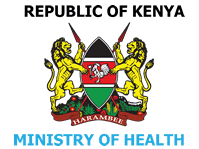Despite good compliance in most public offices, government buildings, and other workplaces, smoking in public continues to be observed in the hospitality/entertainment sector. The provision for designated smoking areas weakens Kenya’s smoke-free policies and hinders universal protection against secondhand tobacco smoke.
The Guidelines to Article 8 of the FCTC
require 100% smoke-free public places. Section 33 of the Tobacco Control Act, 2007 bans smoking in public places (which are defined as any indoor, enclosed, or partially enclosed areas that are open to the public, including workplaces, and health, educational, and recreational institutions). However, smoking is permitted in designated areas. The definition of a designated smoking area in Section 33 provides for ventilation, which has been proven to be ineffective in protecting from exposure to secondhand smoke. Furthermore, the areas set aside as designated smoking areas do not meet the specifications set out in the law and do not protect the public near them from exposure to secondhand smoke.The 2014 regulations expanded the areas in which smoking is banned to include private vehicles with children on board and streets, walkways, and verandas adjacent to public places. Kenya’s smoke-free provisions are comprehensive, save for the designated smoking areas.
Respondents Who Smoked or Witnessed Smoking in Public Places by Wave
Smokers Who Smoked in Public Places
Respondents Who Witnessed Smoking in Public Places They Visited
Source: ITC, 2020
The ITC survey revealed that compliance with the ban on public smoking was high in public transport vehicles, hospitals, and restaurants. Conversely, compliance was low in bars and private workplaces. In 2012, 76% of smokers stated that they smoked in bars, whereas in 2018 65% of smokers reported that they smoked in bars. In 2012, 70% of respondents who visited a bar witnessed smoking, whereas in 2018 57% of respondents who visited a bar witnessed smoking.
Enforcement at the county level still faces challenges. In Nairobi county, the smoke-free law has largely been enforced in the central business district. However, in recreational areas such as Uhuru Park and in street markets within residential areas, public smoking still occurs during the day and at night given the absence of enforcement officers.
Enforcement at night requires presence of the police to ensure security for enforcement officers which is not routinely provided or financially provided for.A 2018 study carried out in Nakuru county found that roughly 253 out of 264 licensed liquor establishments (96%) permitted smoking within their premises. The required ‘no smoking’ signs were present in 42% of restaurants, 50% of night clubs, and 58% of bars.
Another 2019 study surveyed 384 bars and restaurants in Nakuru and Kisumu counties. The study found that smoking took place in 43% of the bars and restaurants. Approximately 49% of the bars and 58% of the restaurants did not have ‘no smoking’ signs.

